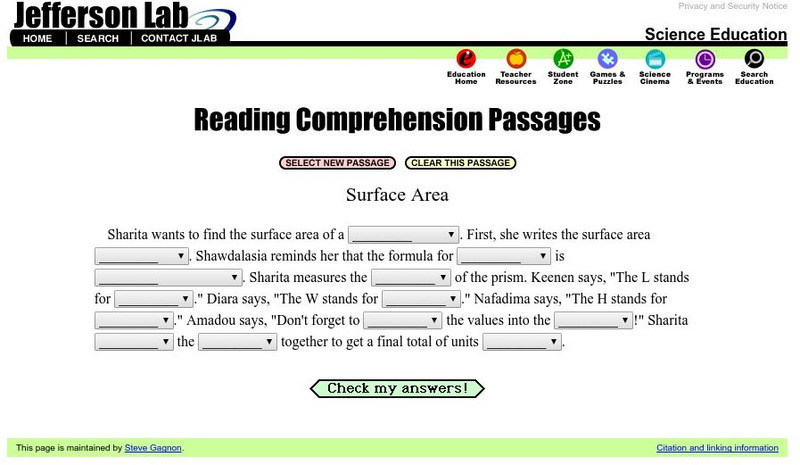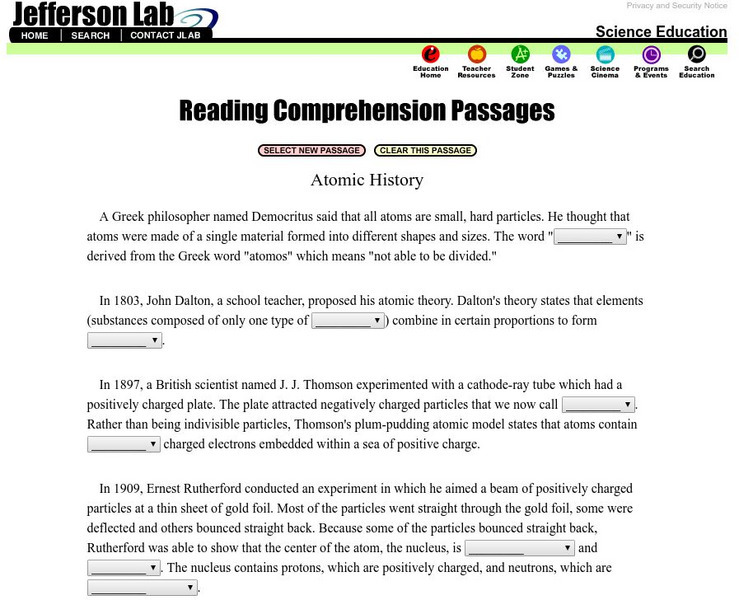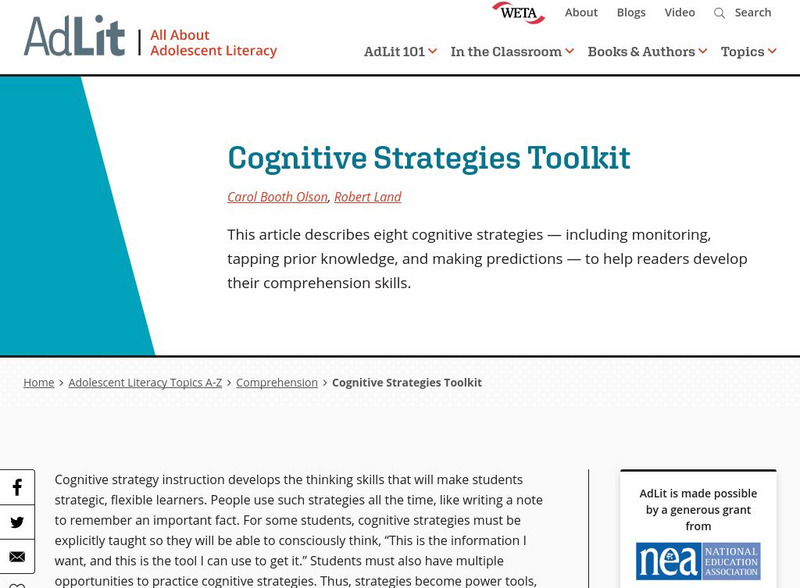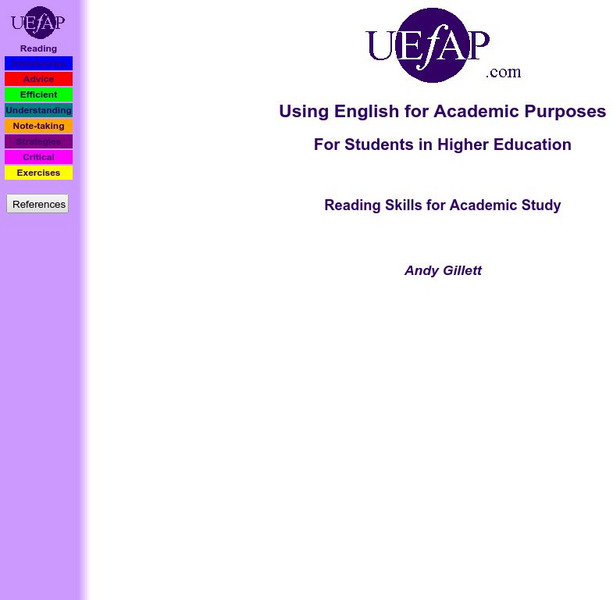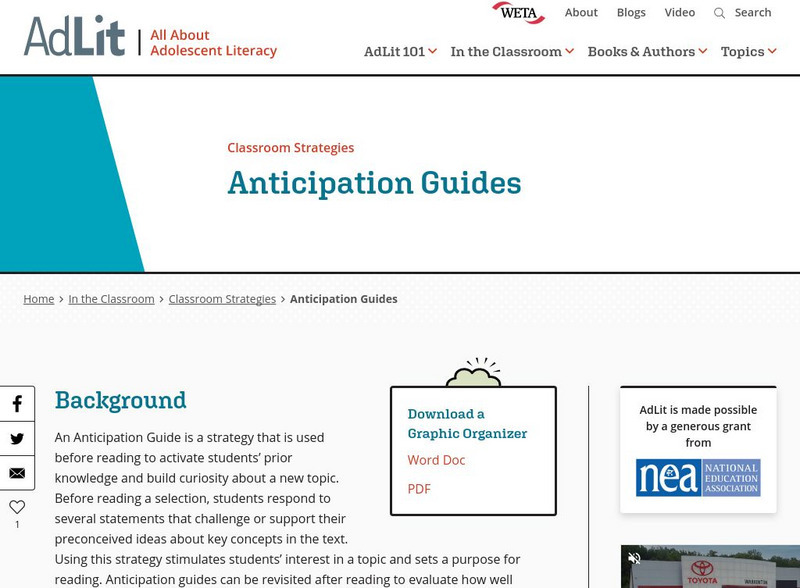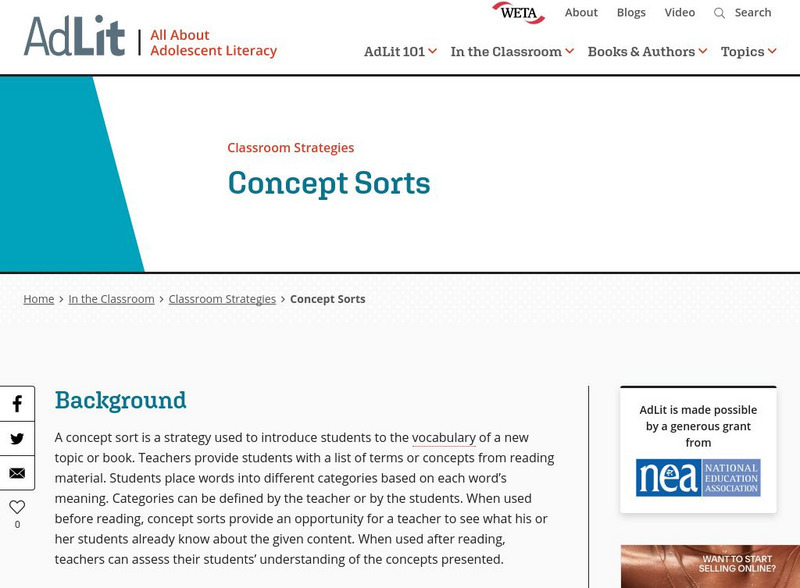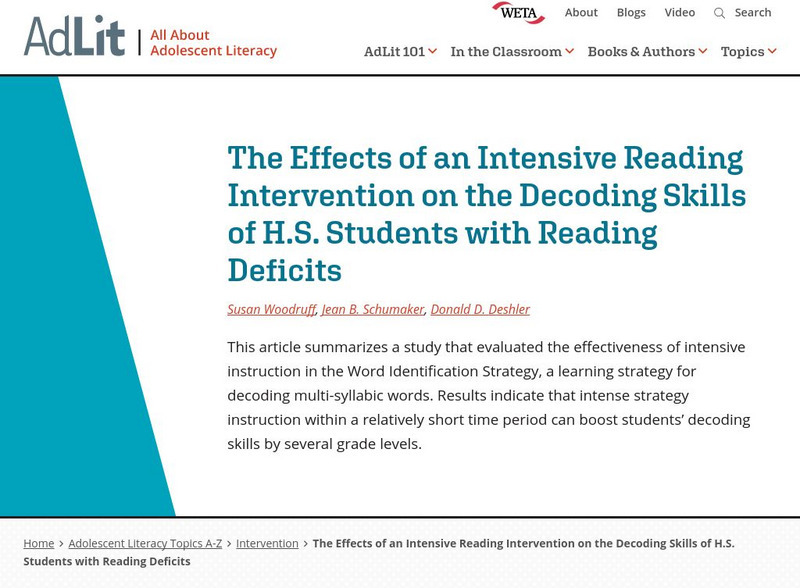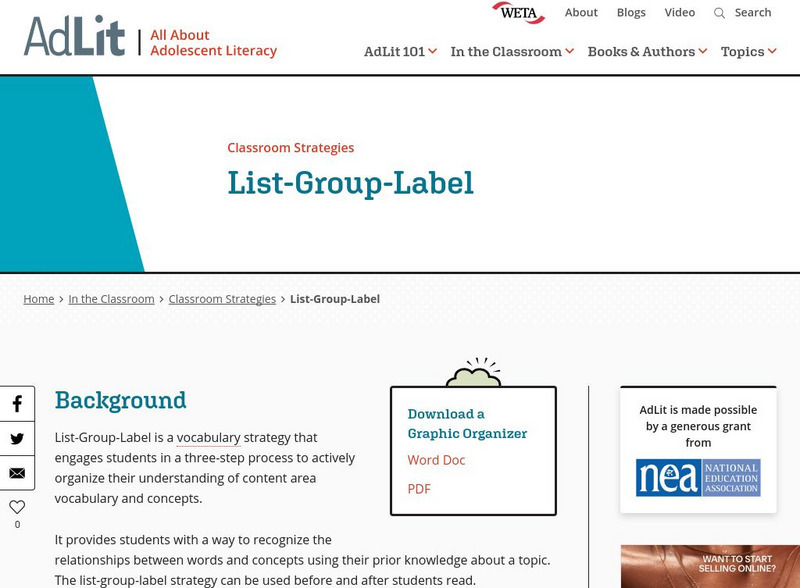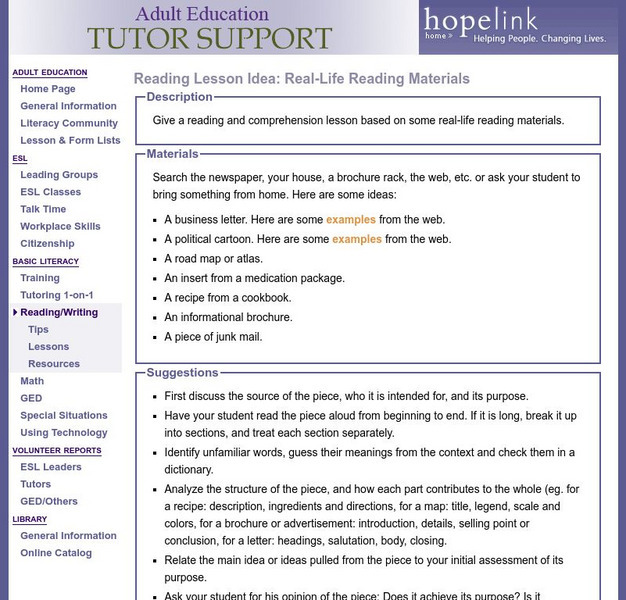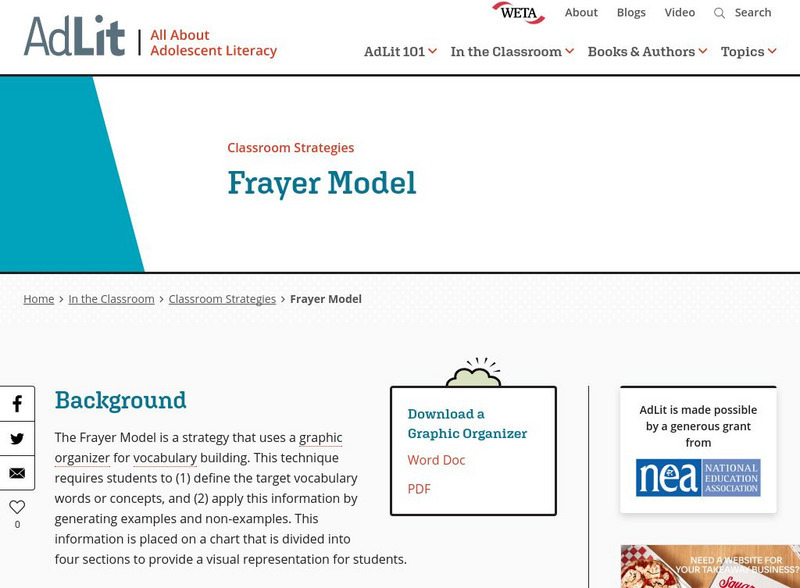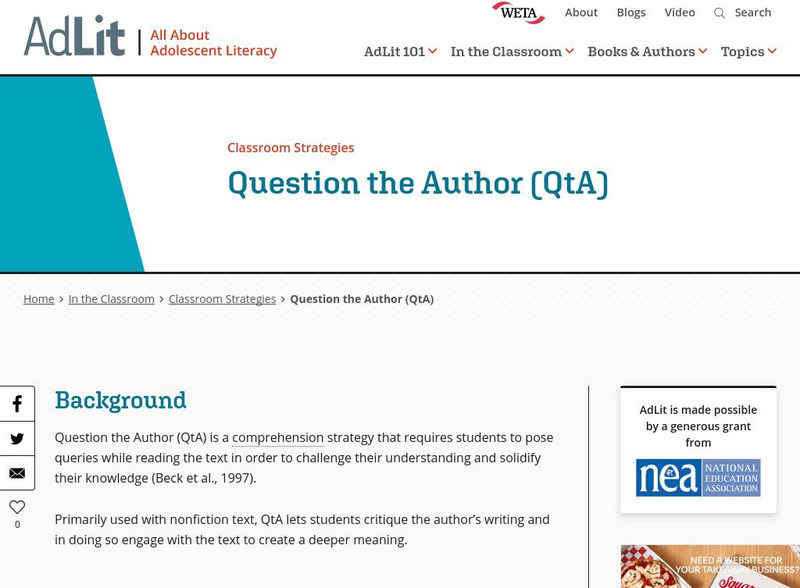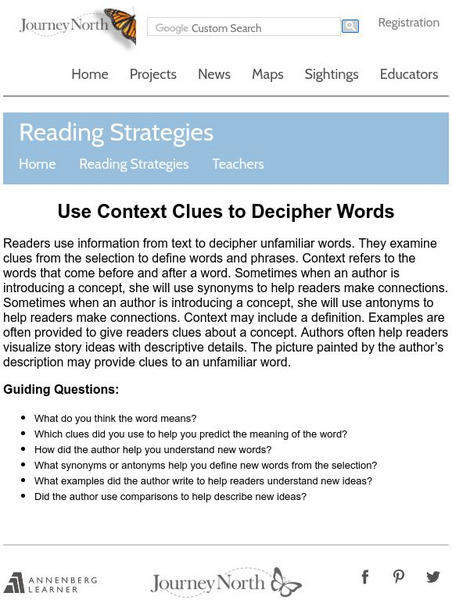Thomas Jefferson National Accelerator Facility
Jefferson Lab: Reading Passage: Surface Area
Read and fill in the blanks of this passage explaining how to calculate surface area. Each blank has a dropdown menu with choices. When you finish, click CHECK MY ANSWERS. If you pick a wrong answer, the right answer will be displayed...
Thomas Jefferson National Accelerator Facility
Jefferson Lab: Reading Passages: Cell Division Through Mitosis
Read and fill in the blanks of this passage explaining cell division through mitosis. Each blank has a dropdown menu with choices. When you finish, click CHECK MY ANSWERS. If you pick a wrong answer, the right answer will be displayed...
Thomas Jefferson National Accelerator Facility
Jefferson Lab: Reading Passages: The Three Branches of Government
Read and fill in the blanks of this passage explaining the three branches of government. Each blank has a drop-down menu with choices. When you finish, click CHECK MY ANSWERS. If you pick a wrong answer, the right answer will be...
Thomas Jefferson National Accelerator Facility
Jefferson Lab: Reading Passages: Atomic History
Read and fill in the blanks of this passage explaining atomic history. Each blank has a dropdown menu with choices. When you finish, click CHECK MY ANSWERS. If you pick a wrong answer, the right answer will be displayed along with your...
AdLit
Ad lit.org: Cognitive Strategies Toolkit
This article describes eight cognitive strategies - including monitoring, tapping prior knowledge, and making predictions - to help readers develop their comprehension skills.
Sophia Learning
Sophia: Reading Strategies: Tutorial
In this slideshow tutorial, students will review different types of reading strategies to promote comprehension of text. The strategies included are the following: making predictions, visualizing, questioning the text, retelling,...
Other
Reading Skills for Academic Study
Designed for university students in the United Kingdom but applicable to English and advanced ESL students in other countries, this tutorial provides strategies and skills for required academic reading loads.
Michigan State University
Michigan State University: Intervention for Reading: K W L Strategy
The K-W-L strategy stands for what I Know, what I Want to learn, and what I did Learn. By activating students' background knowledge, it improves comprehension of expository text.
Other
Ncrel: Reading Strategies: Before, During, and After [Pdf]
This page provides a detailed chart to aid students' understanding of texts. It goes through the steps of pre-reading, during reading, and after reading, outlining what students should be thinking about as they interact with a text. This...
AdLit
Ad lit.org: Classroom Strategies: Anticipation Guides
An Anticipation Guide is a strategy that is used before reading to activate students' prior knowledge and build curiosity about a new topic. Before reading a selection, students respond to several statements that challenge or support...
AdLit
Ad lit.org: Classroom Strategies: First Lines
First Lines is a strategy in which students read the beginning sentences from assigned readings and make predictions about the content of what they're about to read. This pre-reading technique helps students focus their attention on what...
AdLit
Ad lit.org: Classroom Strategies: Concept Sorts
A concept sort is a strategy used to introduce students to the vocabulary of a new topic or book. Teachers provide students with a list of terms or concepts from reading material. Students place words into different categories based on...
AdLit
Ad lit.org: Effects of Intensive Reading Intervention of Decoding Skills
This article summarizes a study that evaluated the effectiveness of intensive instruction in the Word Identification Strategy, a learning strategy for decoding multi-syllabic words. Results indicate that intense strategy instruction...
Michigan State University
Michigan State University: Intervention for Reading: Paraphrasing
Improve understanding of expository materials by getting the main ideas through paraphrasing. The paraphrasing strategy helps students recall the main ideas and specific facts of materials they read. There are three steps for teaching...
AdLit
Ad lit.org: Classroom Strategies: List Group Label
It provides students with a way to recognize the relationships between words and concepts using their prior knowledge about a topic. The list-group-label strategy can be used before and after students read.
AdLit
Ad lit.org: Classroom Strategies: Mnemonics
A mnemonic is an instructional strategy designed to help students improve their memory of important information. This technique connects new learning to prior knowledge through the use of visual and/or acoustic cues. The basic types of...
Hopelink
Hopelink: Reading Lesson Idea: Real Life Reading Materials
The purpose of this reading lesson is to offer a reading and comprehension lesson based on real-life reading materials. This gives students the opportunity to gain reading comprehension skills from real-life reading material.
AdLit
Ad lit.org: Classroom Strategies: Frayer Model
The Frayer Model is a strategy that uses a graphic organizer for vocabulary building. This technique requires students to (1) define the target vocabulary words or concepts, and (2) apply this information by generating examples and...
Harvard University
Harvard College Writing Center: How to Do a Close Reading
A brief explanation of the tasks involved in doing a close reading in preparation for writing. This writer breaks the process into three steps which involve annotating the text, looking for patterns, and asking questions of the text.
Other
Reading Quest: Strategies for Reading Comprehension: Concept of Definition Map
Sometimes teaching students about creating definitions is difficult because they do not understand about multiple meanings or depth in meaning. This is a chance to teach students, using the concept map included, how to create definitions...
AdLit
Ad lit.org: Classroom Strategies: Question the Author (Qt A)
Question the Author (QtA) is a comprehension strategy that requires students to pose queries while reading the text in order to challenge their understanding and solidify their knowledge (Beck et al., 1997).
Other
Reading Comprehension: Question Answer Relationships
If you need help working with your students on questioning a text or if you are working on higher-level questioning skills, this is a simple and helpful site. Printable resources available from site.
Dartmouth College
Dartmouth College: Reading Techniques: Sq3 R Method for Thorough Study
A brief description of the SQ3R method of reading comprehension and how it can be used to improve study habits.
Annenberg Foundation
Annenberg Learner: Journey North: Reading Strategies: Use Context Clues to Decipher Words
This reading resource discusses the strategy of using context clues to decipher new words. A list of guiding questions is provided to help students as they use context clues to understand new words.
Other popular searches
- Active Listening Strategies
- Comprehension Strategies 1st
- Listening Skill Strategies
- Listening Strategies
- Comprehension and Strategies
